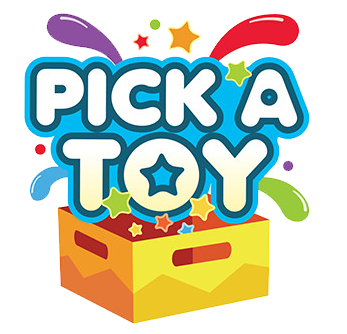Title: Choosing the Right Toys for Different Learning Styles
Introduction
Every child is unique, and they have their own distinct learning style. Some children are visual learners who thrive on seeing information presented in a visual format, while others are auditory learners who learn best through listening and speaking. Additionally, kinesthetic learners are those who learn by doing and moving. To support a child's learning and development, it's essential to choose toys that align with their learning style. In this blog, we'll explore how to select the right toys for different learning styles to optimize their educational experiences and growth.
Understanding Learning Styles
Visual Learners: Visual learners absorb information best through visual aids such as charts, diagrams, and images. They tend to be observant and enjoy puzzles and reading.
Auditory Learners: Auditory learners grasp concepts through listening, speaking, and discussions. They thrive in environments where they can engage in conversations and listen to music or audiobooks.
Kinesthetic Learners: Kinesthetic learners learn by doing and moving. They prefer hands-on activities, physical experiments, and interactive play.
Choosing Toys for Visual Learners
Visual learners benefit from toys that stimulate their sense of sight and engage their observation skills. Here are some toy recommendations:
Educational Puzzles: Puzzles with vibrant images and varying levels of complexity encourage visual learners to analyze and solve problems through visual cues.
Art Supplies: Coloring books, sketchbooks, and art supplies like colored pencils and markers allow visual learners to express themselves creatively while improving their fine motor skills.
Books with Illustrations: Choose books with colorful illustrations and pictures. These help visual learners engage with stories and concepts while enhancing their reading skills.
Educational Flashcards: Flashcards with pictures and words are excellent tools for building vocabulary and enhancing memory through visual association.
Choosing Toys for Auditory Learners
Auditory learners thrive on sounds and conversations. Toys that encourage listening and speaking are ideal for them:
Musical Instruments: Instruments like keyboards, xylophones, or simple drums enable auditory learners to explore sounds and rhythms while developing a sense of musicality.
Audiobooks and Podcasts: Provide access to age-appropriate audiobooks and podcasts to stimulate their love for storytelling and listening.
Educational Games: Board games that involve verbal interaction, discussions, and strategizing promote auditory learning by encouraging conversation and critical thinking.
Building Blocks with Sound: Some building sets incorporate sound components, which can engage auditory learners while they construct and experiment.
Choosing Toys for Kinesthetic Learners
Kinesthetic learners learn by doing and moving, making active play an essential part of their development:
Building Blocks and Construction Sets: Toys like LEGO, building blocks, and construction sets allow kinesthetic learners to physically build and experiment with their creations.
Outdoor Sports Equipment: Sports equipment like soccer balls, bicycles, or jump ropes encourages physical activity while honing motor skills.
Hands-On Science Kits: Science kits that involve experiments, like volcano models or crystal growing, provide kinesthetic learners with opportunities to explore scientific concepts through hands-on activities.
Art and Craft Kits: Kits that involve cutting, gluing, and crafting, such as jewelry making or model building, appeal to kinesthetic learners' desire to create with their hands.
Conclusion
Understanding your child's learning style is a valuable step toward selecting the right toys to support their growth and development. By choosing toys that align with their visual, auditory, or kinesthetic learning preferences, you can create a stimulating and engaging environment that fosters their individual strengths and helps them thrive. Remember that children may exhibit a combination of learning styles, so offering a variety of toys and experiences can be beneficial in catering to their unique needs and enhancing their overall learning journey.
